By Louise Irvine
Ninety years ago, in April 1931, Daisy Makeig Jones left Wedgwood after a blazing row with Josiah Wedgwood IV. Initially, she had been asked to retire from her position as the designer of Fairyland Lustre, but she refused and continued to come to work. As she stormed out of the meeting, she told one of the lads to smash every piece on the shelves of her studio at Wedgwood’s Etruria factory!
It was the end of Daisy’s incredible career with Wedgwood, which spanned more than 20 years. She joined the company in 1909 following an introduction to the Managing Director, Cecil Wedgwood. He insisted that she start work on the factory floor alongside the trainee painters, despite her art school experience. At 28, she was twice the age of the other apprentices and her middle-class background as the daughter of a doctor set her apart from all the girls embarking on a career in the pottery industry. Nevertheless, like them, her wages started at 2 shillings a week.
After a couple of years, Daisy was invited to join the design staff to assist the Art Director John Goodwin and she became a fully-fledged designer with her own studio at Wedgwood’s Etruria factory in 1914. Her first projects included producing patterns for nursery wares, which was thought to be appropriate for a female designer even though she had no children. Fortunately, she had read a lot of fairytales to her six younger siblings, mainly from the annual Colored Fairy Books published by Andrew Lang and illustrated by Henry J. Ford.
Daisy’s love of elfin magic remained with her all her life and inspired her to design the Fairyland Lustre collection for Wedgwood. Her first patterns were introduced in 1915 using the factory’s new liquid lusters, comprising complex preparations of metallic compounds, resins, and oils that could be painted on-glaze. Achieving the gleaming glaze effects took up to six firings and different skies were suggested with background colors, including daylight mother of pearl, black simulating night-time, flame symbolizing sunset, and blue for moonlight. Wedgwood’s iridescent Fairyland Lustre ware certainly lives up to its name, from the Latin lustrare to shine and iris meaning rainbow.
Daisy’s elves and fairies frolic in a Celtic twilight of fantasy forests draped with spider webs outlined in gold. However, not all was sweetness and light in Daisy’s 'Land of Faerie'. The trauma of World War I cast a shadow over many of her designs where dragons, serpents, and spiders devour baby fairies. The darker side of Daisy, as seen in her Ghostly Wood design, was influenced by the sinister illustrations of Gustave Doré with wailing spirits, flaming souls, and grotesque howling trees with demon heads. See the video about Daisy’s Dark Side in our Fantastique exhibition.
The publication Some Glimpses of Fairyland from 1921 gives us insights into Daisy’s skill as a designer and storyteller. She was a very creative synthesist taking elements from fairy tales from all over the world and weaving them together in her bizarre style. Similarly, she found images in books by the Golden Age illustrators, such as Arthur Rackham, Edmund Dulac, and Kay Nielsen, which were crammed into her studio. She often claimed, “In Fairyland all things are possible” as she combined fantasy illustrations with her vivid imagination to create her complex visions of fairy life.
Fairyland Lustre caught the imagination of the public during roaring the 1920s as they decorated their homes in joyful colors to escape a drab war-weary world. Imagine the effects of the lustrous jewel tones of Daisy’s exotic designs glimmering under gaslight, which was still the main form of domestic lighting at that time. Wedgwood’s fortunes improved with the phenomenal success of this new luxury line, which catered for the home and overseas markets. However, the disastrous Wall Street crash in 1929, which heralded the Great Depression, seriously impacted prosperity in the Potteries. In addition, popular taste was changing to neutral monotone colors and sales of the fanciful Fairyland Lustre wares declined.
It seems that while business was good, Daisy’s eccentricity and Bohemian style were indulged at the Wedgwood factory. She hosted gossipy tea parties in her studio and cooked her favorite lunch of cheese on toast using the printer’s oven. The workforce participated in pantomimes that she directed and smiled at her outlandish fancy dress costumes, including the Portland Vase outfits that she designed for 100 girls to wear at the Wedgwood Bicentenary Pageant in 1930. The girls who painted the Fairyland wares held “Miss Jones” in awe because of her commercial success and her close relationship with the Wedgwood family. Sadly, her friend and ally, Frank Wedgwood, died a few months after the Bicentenary celebrations and he was succeeded as Managing Director by Josiah Wedgwood IV, who did not like Fairyland.
After Daisy’s dramatic departure in April 1931, only a few Fairyland patterns remained in production and it was not until the 1960s that interest in her work was revived. Una des Fontaines, a keen collector, presented a lecture about Fairyland Lustre to the Wedgwood Society in England in 1963 and she published her indispensable reference book in 1976. Una used her talents as a graphic artist to render the intricate details of more than 100 Fairyland Lustre patterns, which have proved invaluable to collectors. Fairyland Fever raged in the 1980s when dealers such as Betty Issod found treasures for celebrity collectors including Whoopi Goldberg and Barbara Streisand. Some of Betty’s key pieces from her personal collection are now on display at WMODA and her 90th birthday was celebrated in the museum in 2017.
Daisy’s Fairyland first cast a spell on Arthur Wiener fifteen years ago and he has created an exceptional collection for WMODA. He also gifted one of his most impressive pieces Dragon King Temple on a Rock to Mickey Wolfson for his 80th birthday and it is on display at the Wolfsonian/FIU Museum in Miami Beach. Loans from the Wiener reserve collection traveled to St. Petersburg Museum of Art in 2019 and created more Fairyland fans for the Darkly Magical World of Daisy Makeig Jones. Daisy’s enchanted world was also in the spotlight recently with the lecture with the Wedgwood Society of Washington D.C.
When accused of daydreaming, Daisy would slightly misquote Shakespeare’s famous line from The Tempest “We are such stuffs as dreams are made of”. Daisy’s 'Lands of Faerie and Illusion' combined her extraordinary dreams with reality, imbued with her quirky personality and whimsical sense of humor. Her sumptuous Fairyland Lustre designs have illuminated our lives.
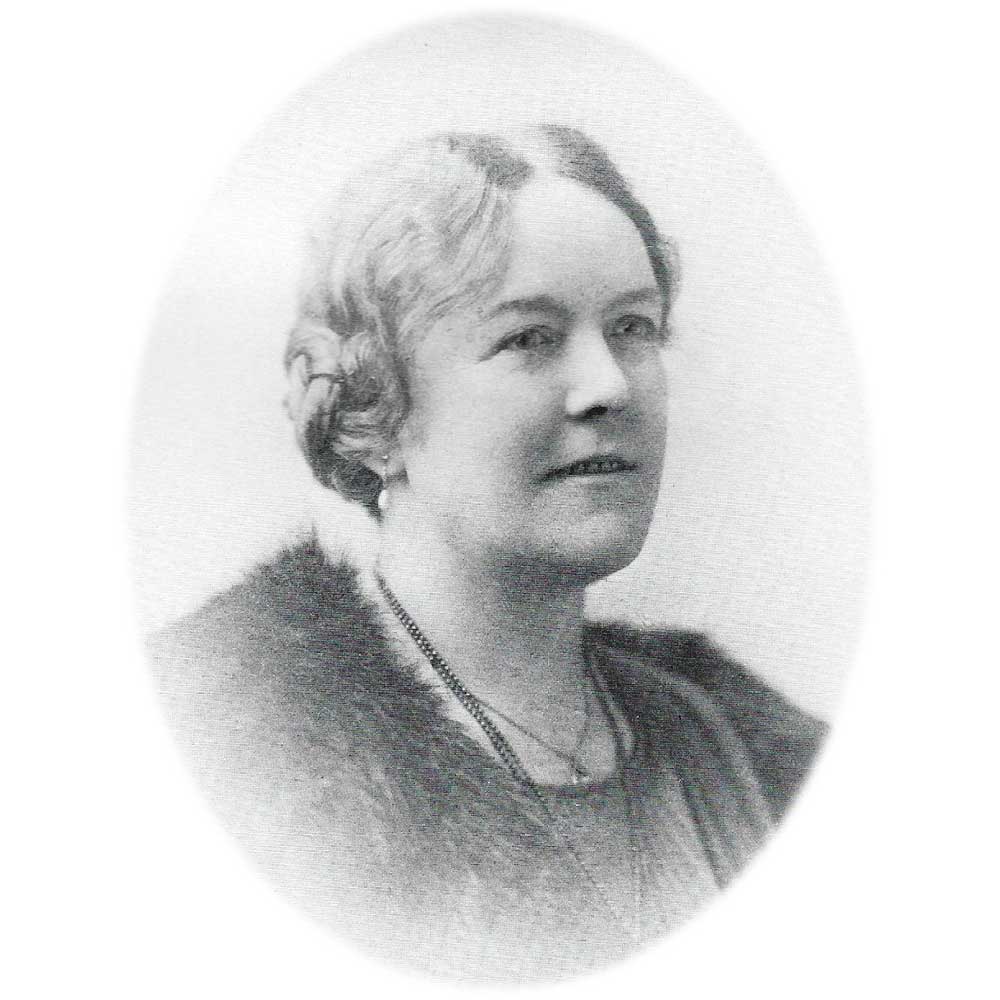
Daisy Makeig Jones
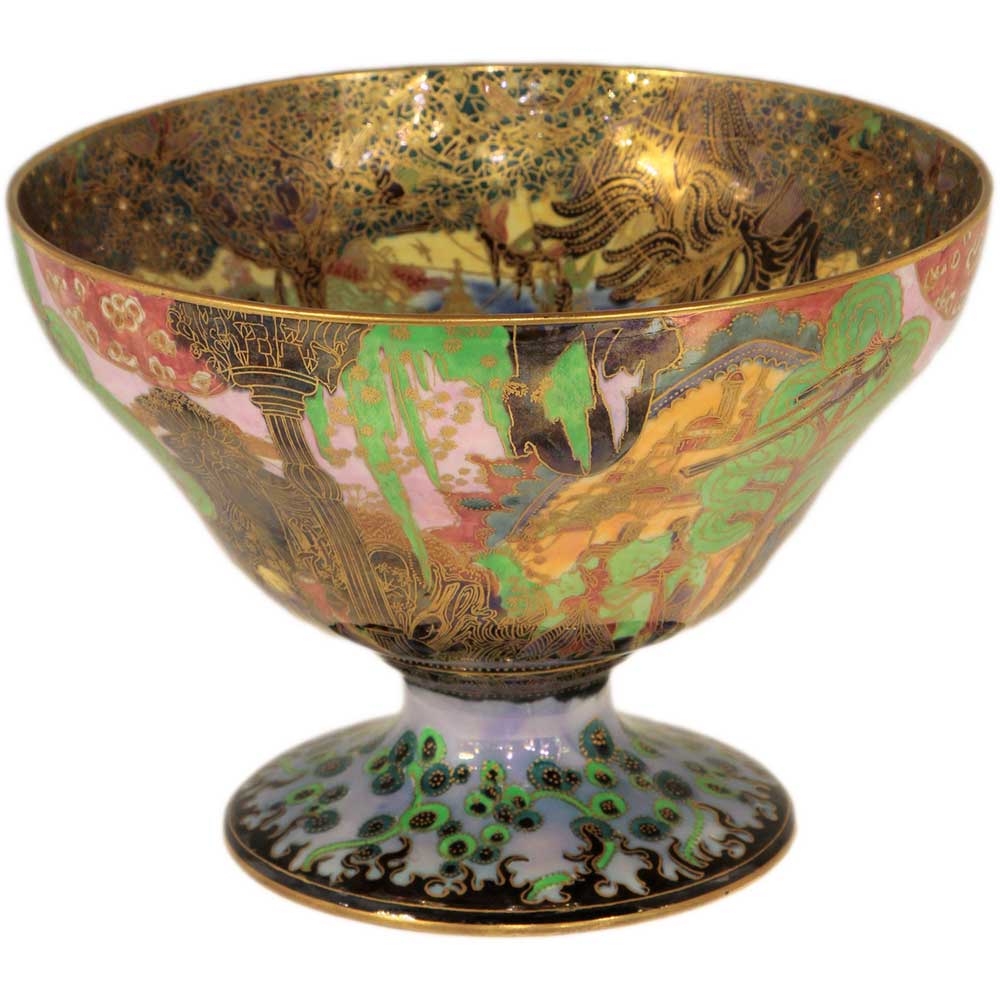
Wedgwood Fairyland Lustre Melba Bowl

Wedgwood Factory

Louise in the Fairyland Lustre exhibit
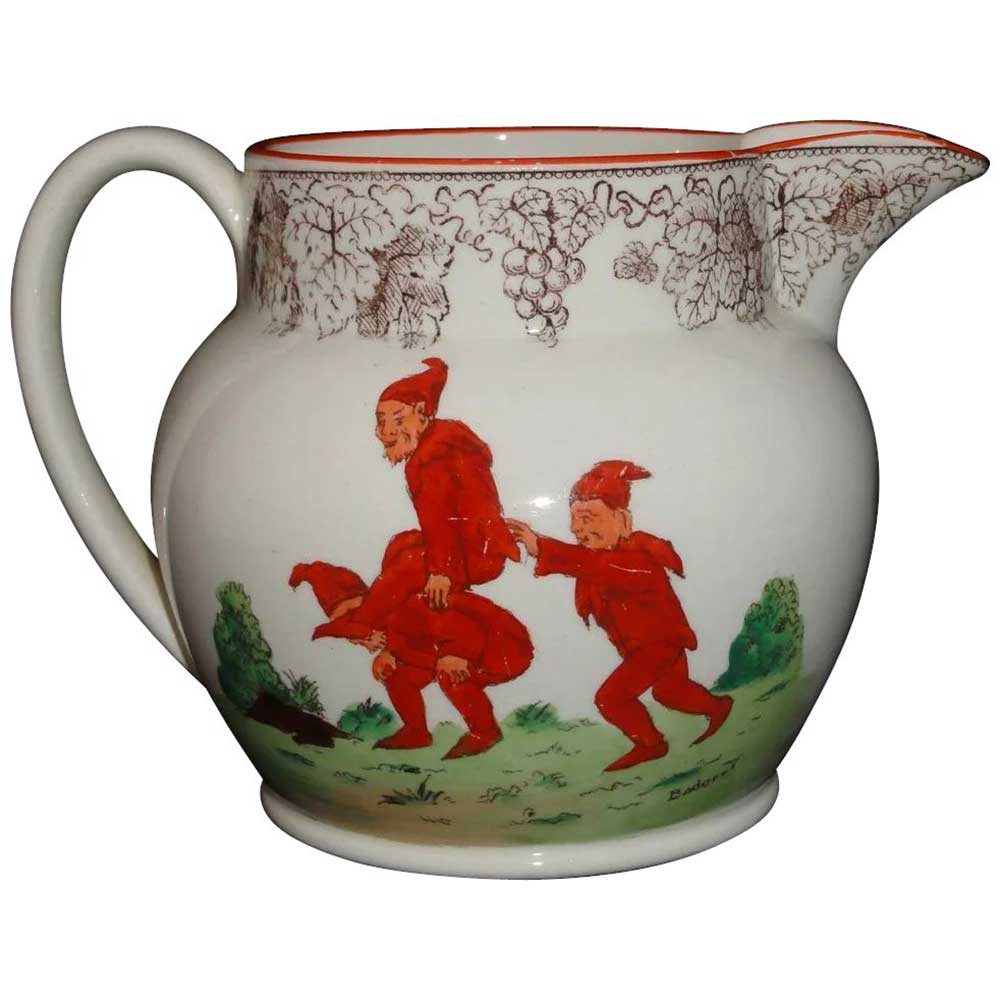
Wedgwood Nursery Ware

Red Fairy Book by A. Lang

Green Fairy Book by A. Lang

Wedgwood Fairyland Lustre Butterfly Woman Vase
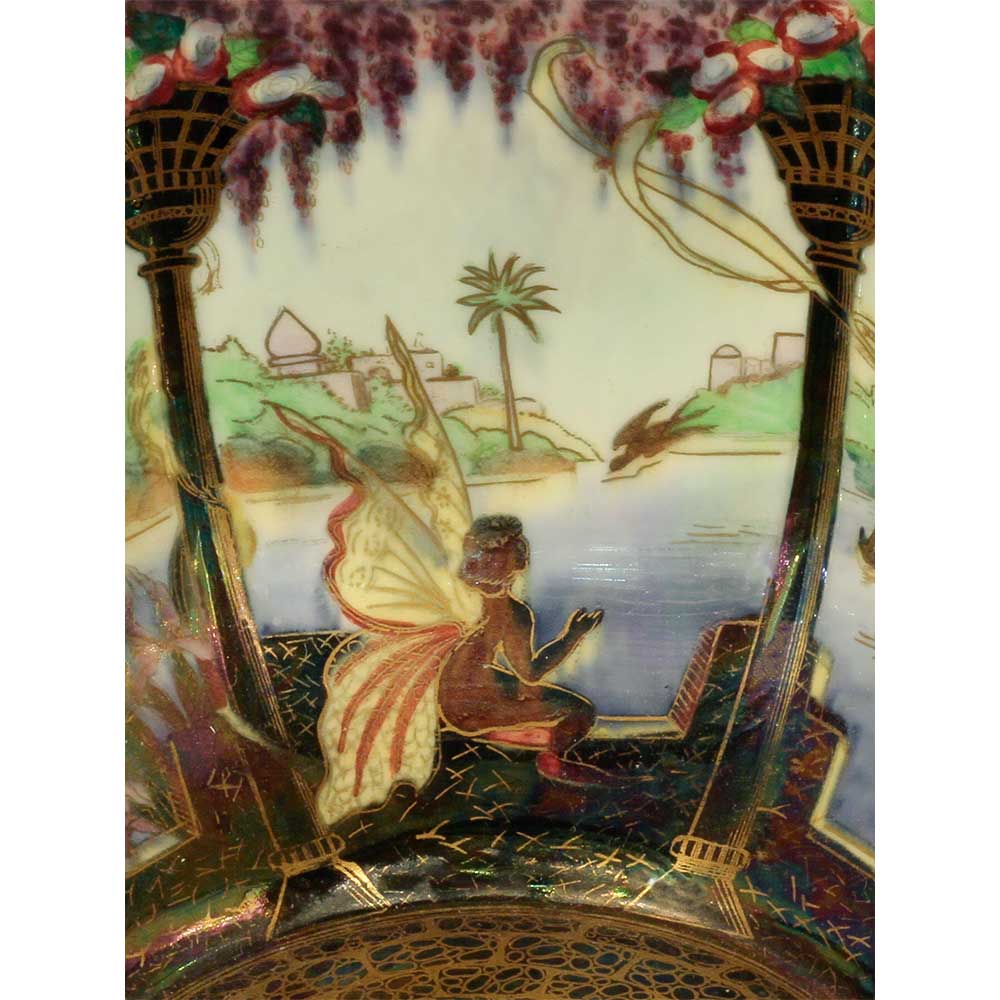
Wedgwood Fairyland Lustre detail

Wedgwood Fairyland Moorish Smoke and Ribbons Bowl
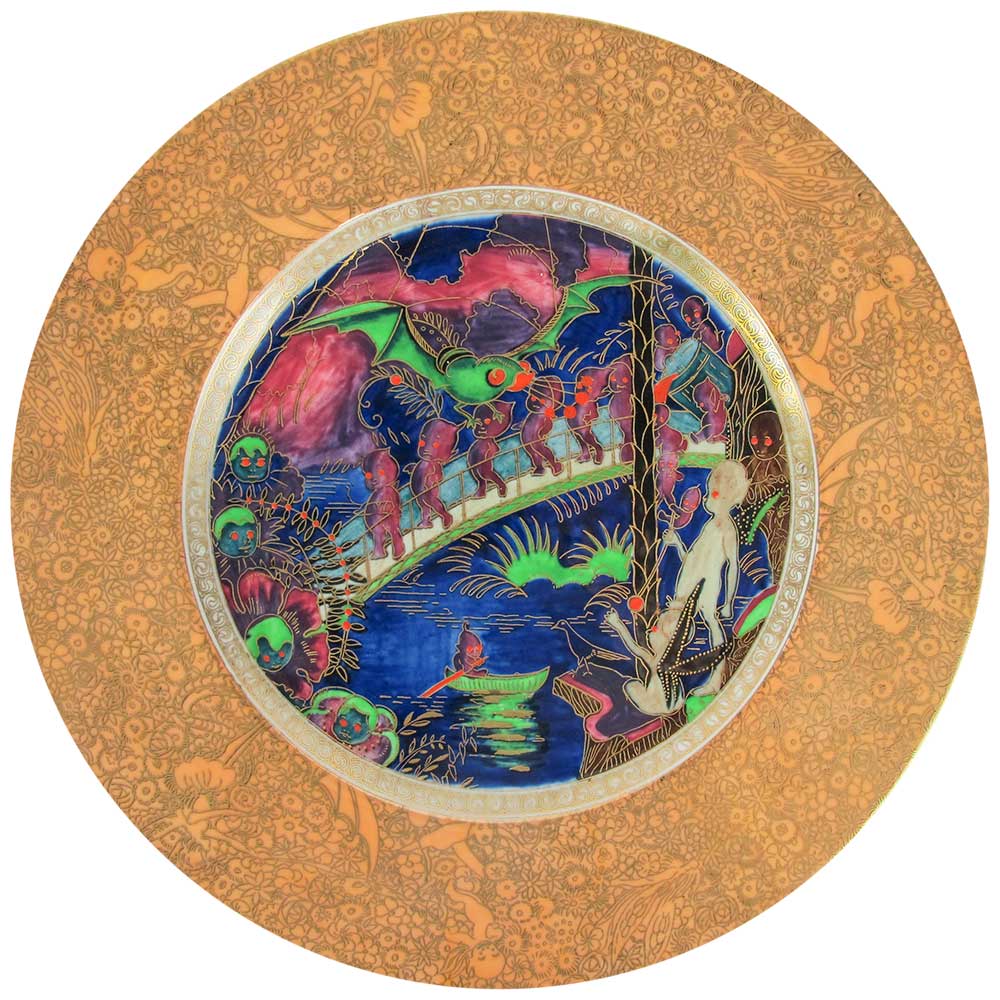
Wedgwood Fairyland Imps on a Bridge Plate

Wedgwood Fairyland Imps on a Bridge Vase

Wedgwood Fairyland Lustre Spider lid for Bubbles Malfory Pot
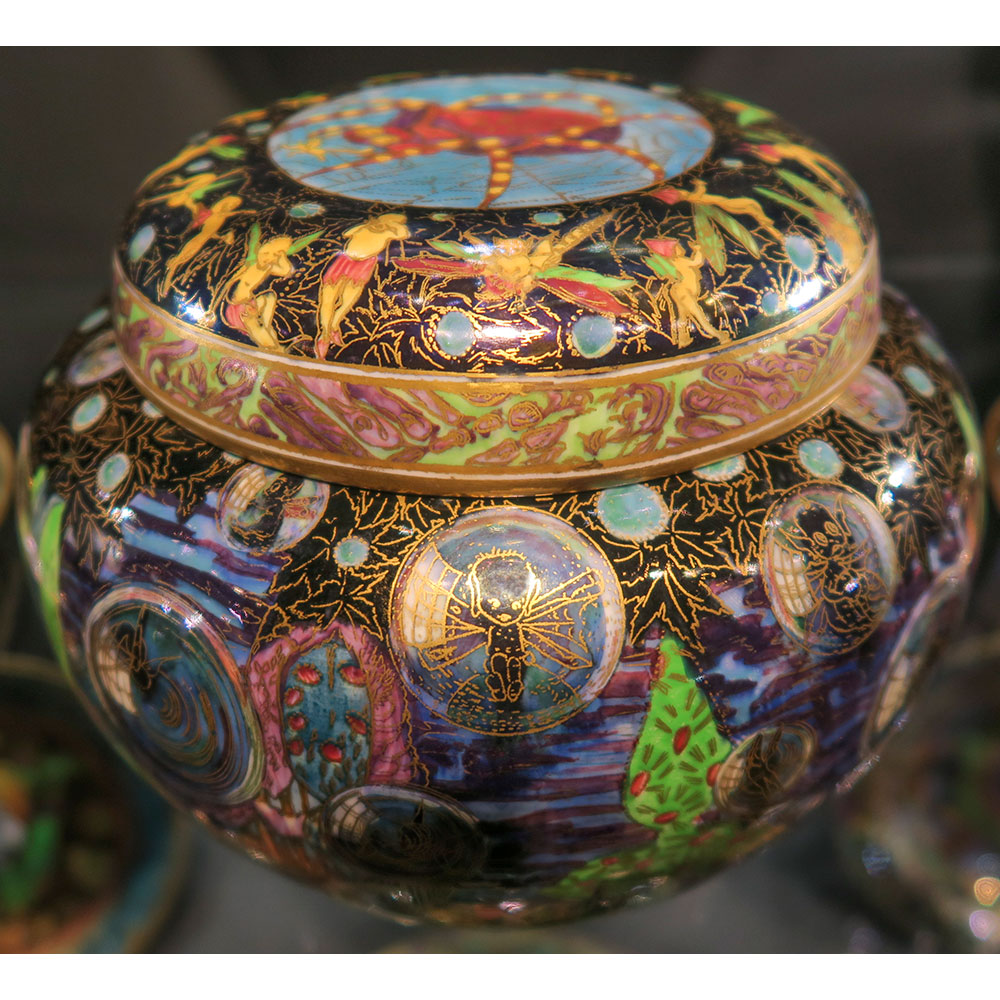
Wedgwood Fairyland Lustre Bubbles Malfory Pot

Wedgwood Fairyland Lustre Torches Plaque

Wedgwood Fairyland Lustre Woodland Elves in a Pine Tree
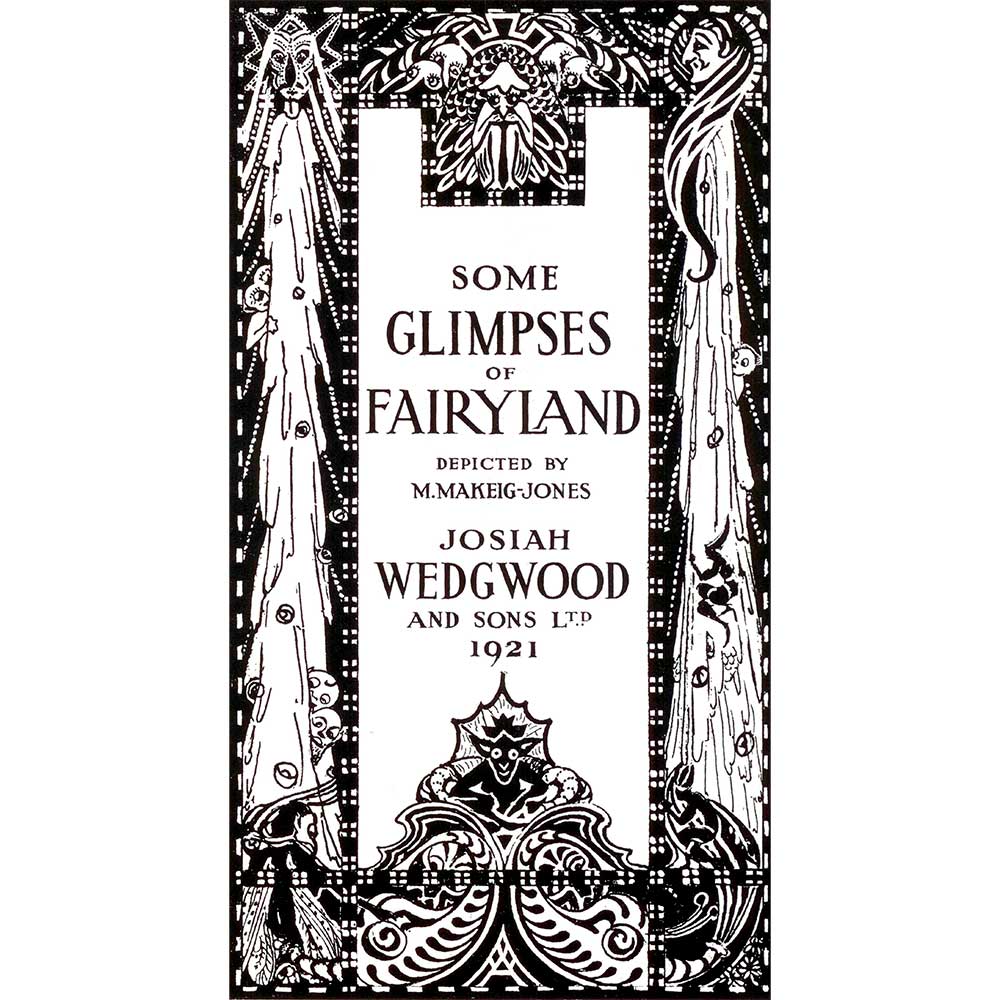
Wedgwood Fairyland Lustre Glimpses of Fairyland

Ghostly Woods in Glimpses of Fairyland

Garden of Paradise in Glimpses of Fairyland

Troll by H.J. Ford
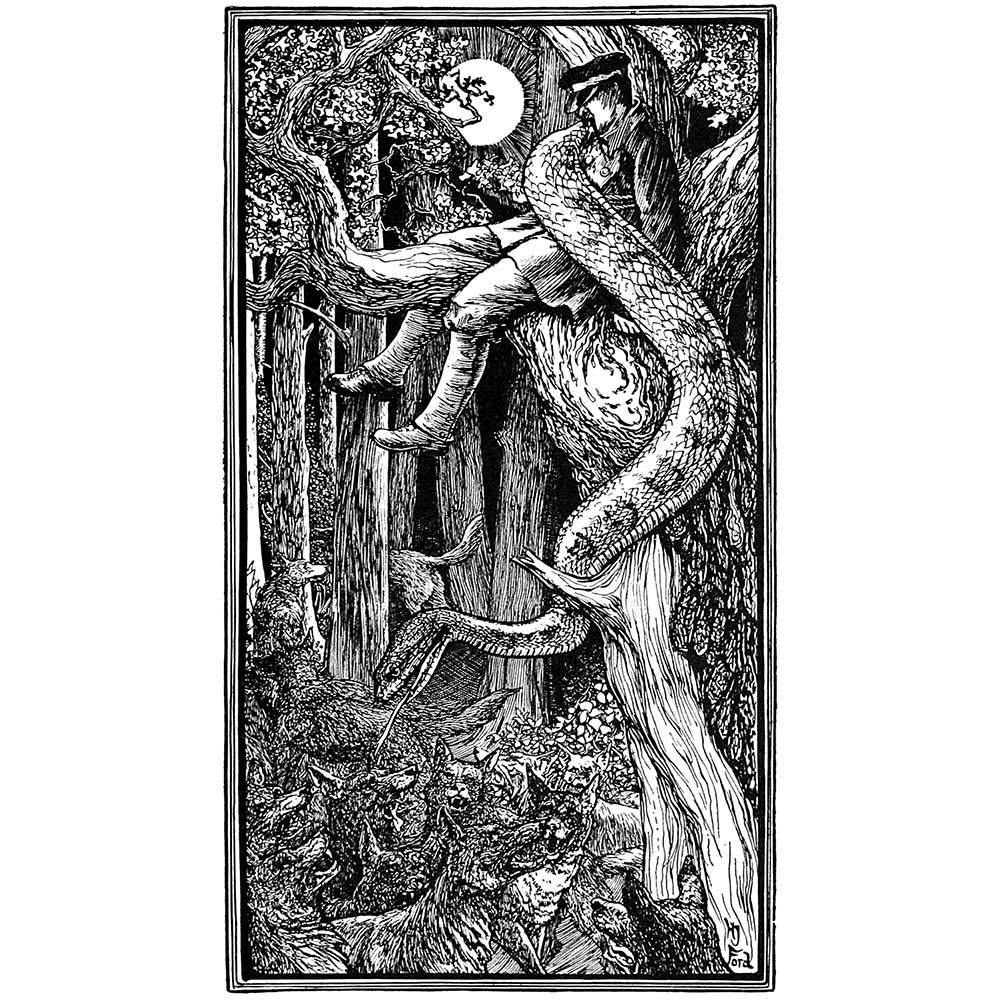
Orange Storybook by H.J. Ford

Goblin by H.J. Ford
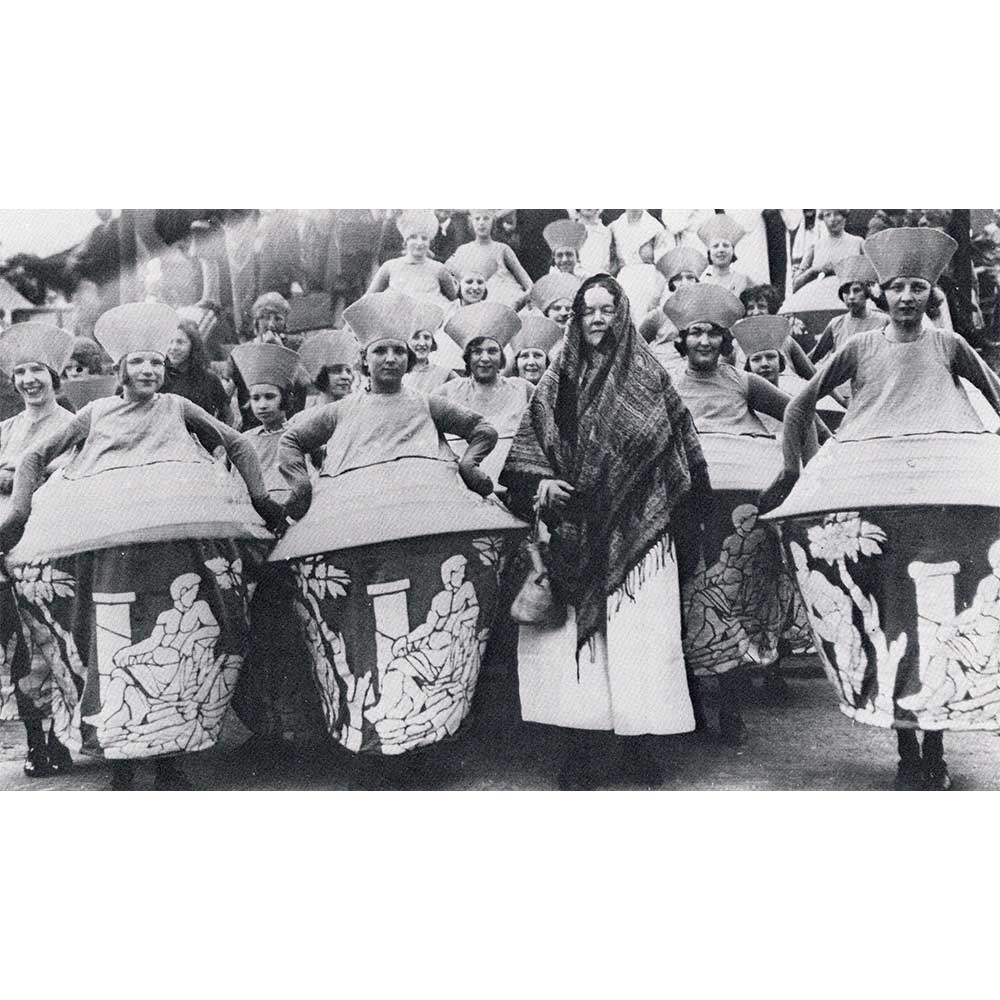
Wedgwood Bicentenary celebration

Daisy Cartoon by one of her staff
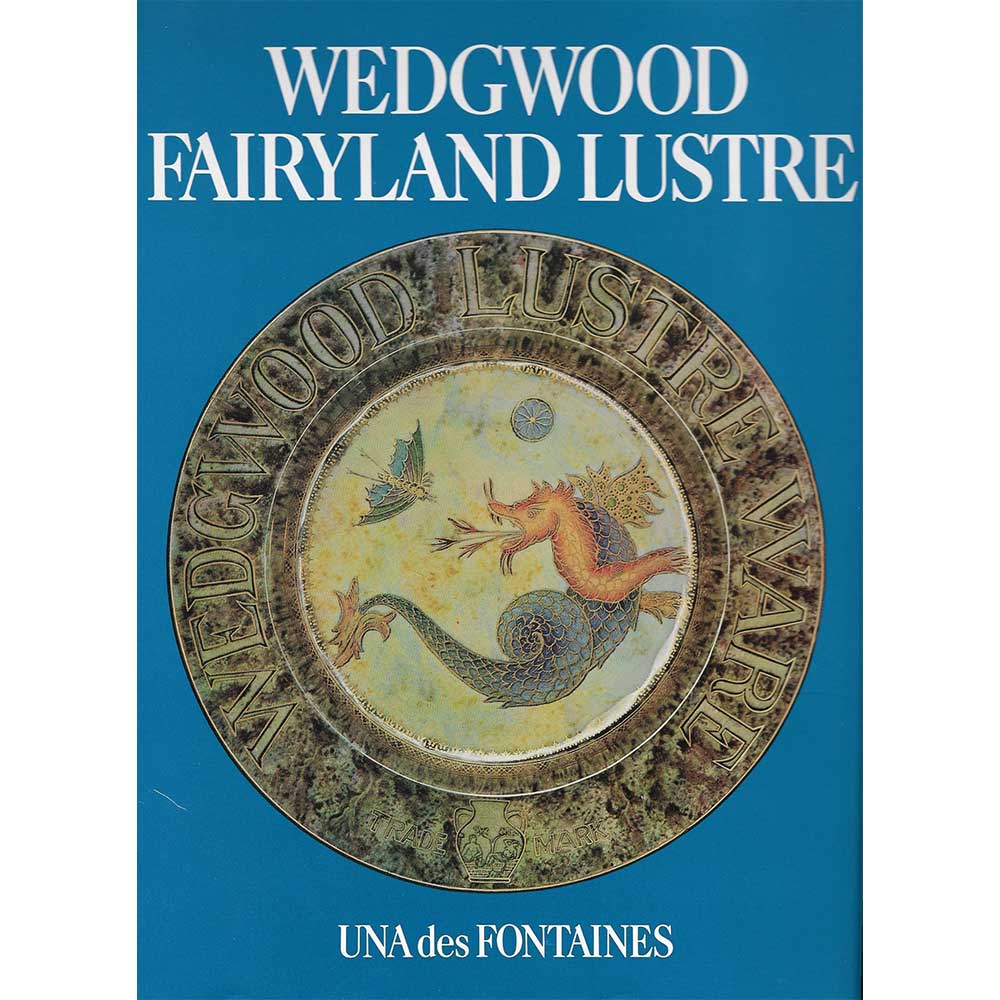
Wedgwood Fairyland Lustre by U. des Fontaines
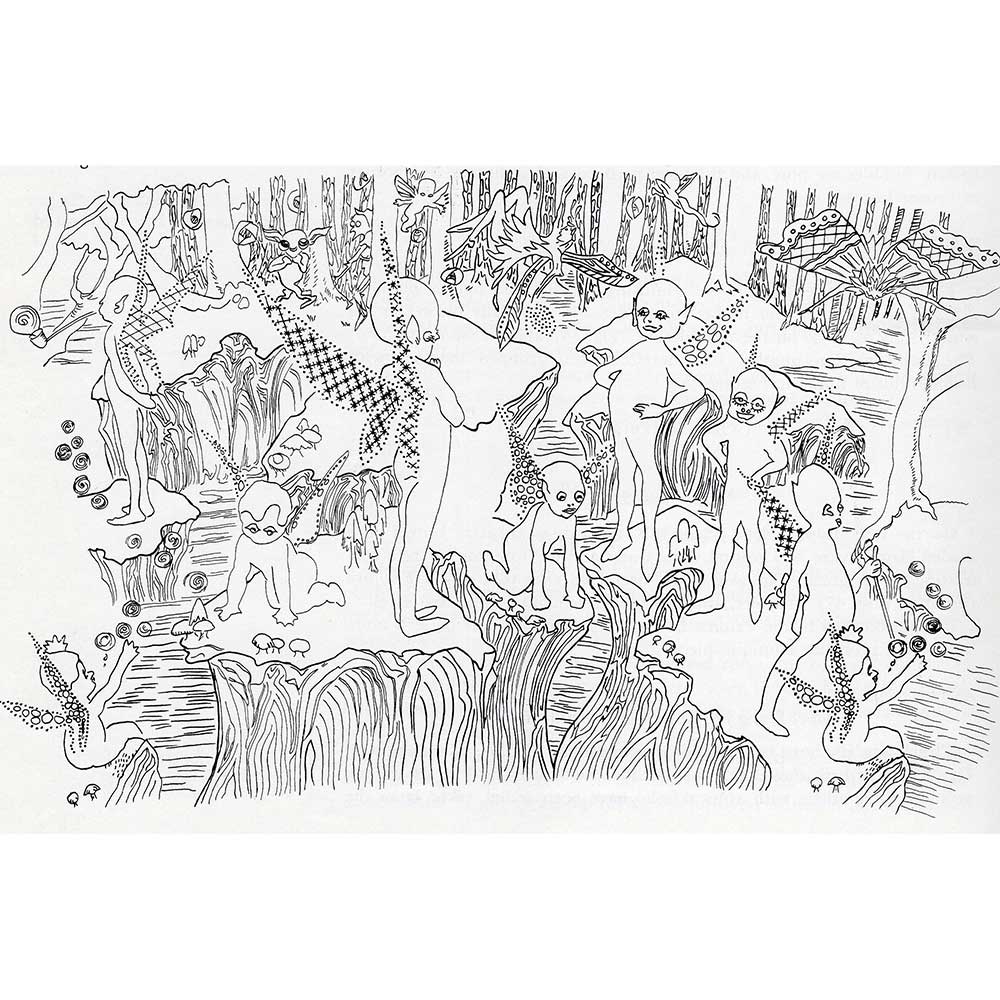
Goblins by U. des Fontaines

Demon Tree by U. des Fontaines
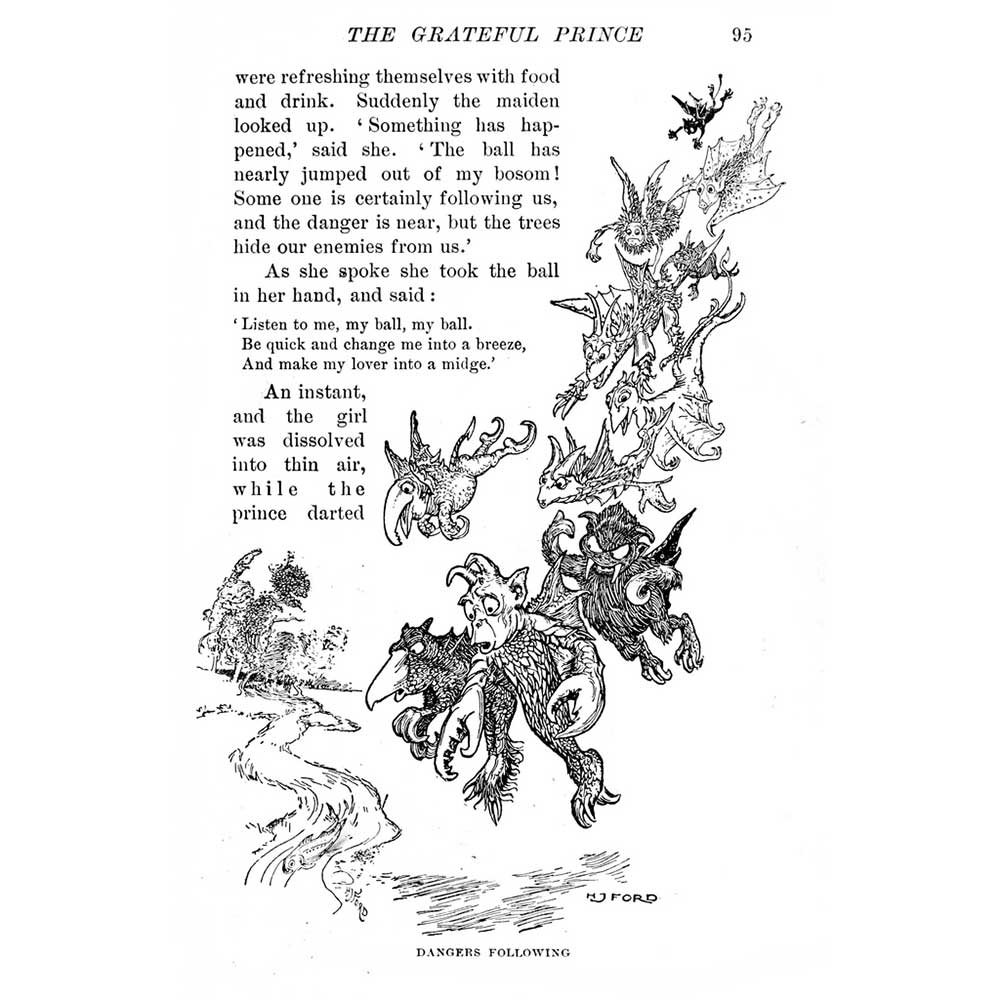
Dangers Following by H. J. Ford

Louise with Betty Issod at her 90th Birthday celebration

Betty Issod's Fairyland Lustre birthday cake
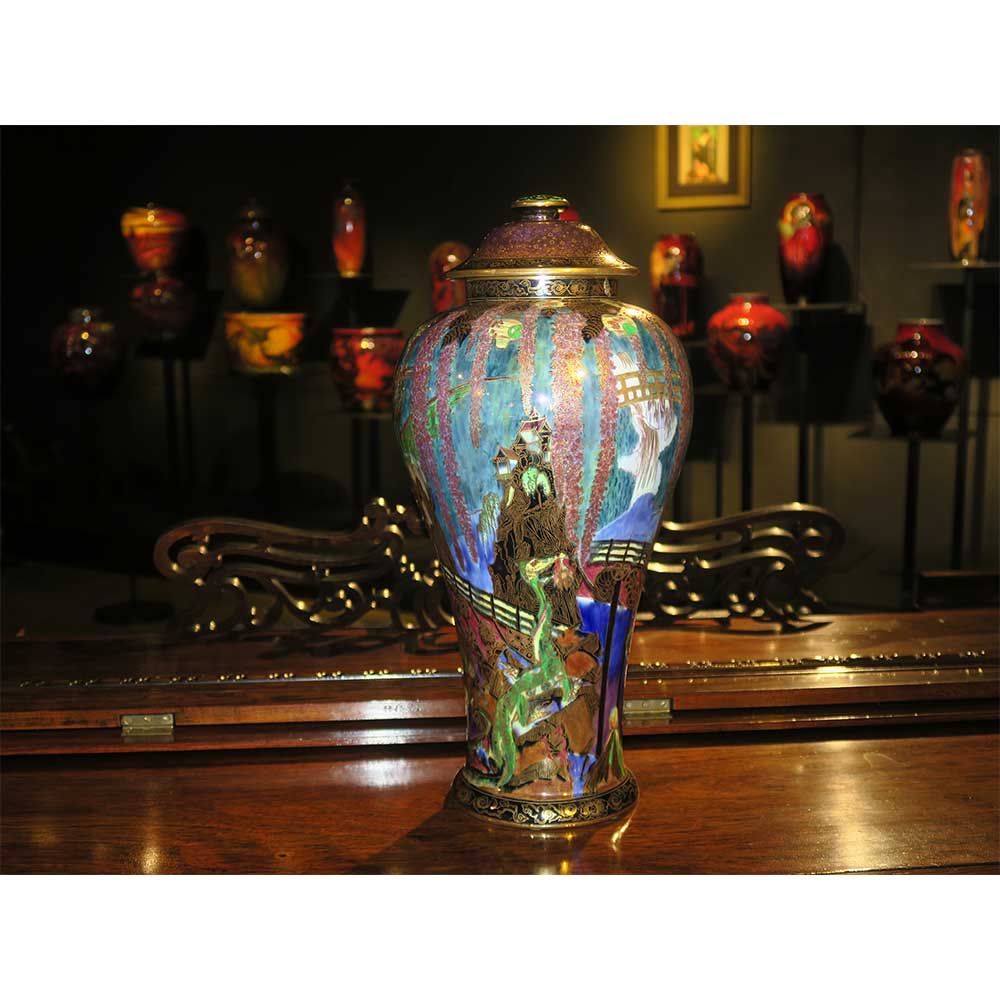
Wedgwood Fairyland Lustre Dragon King Temple on a Rock @ WMODA
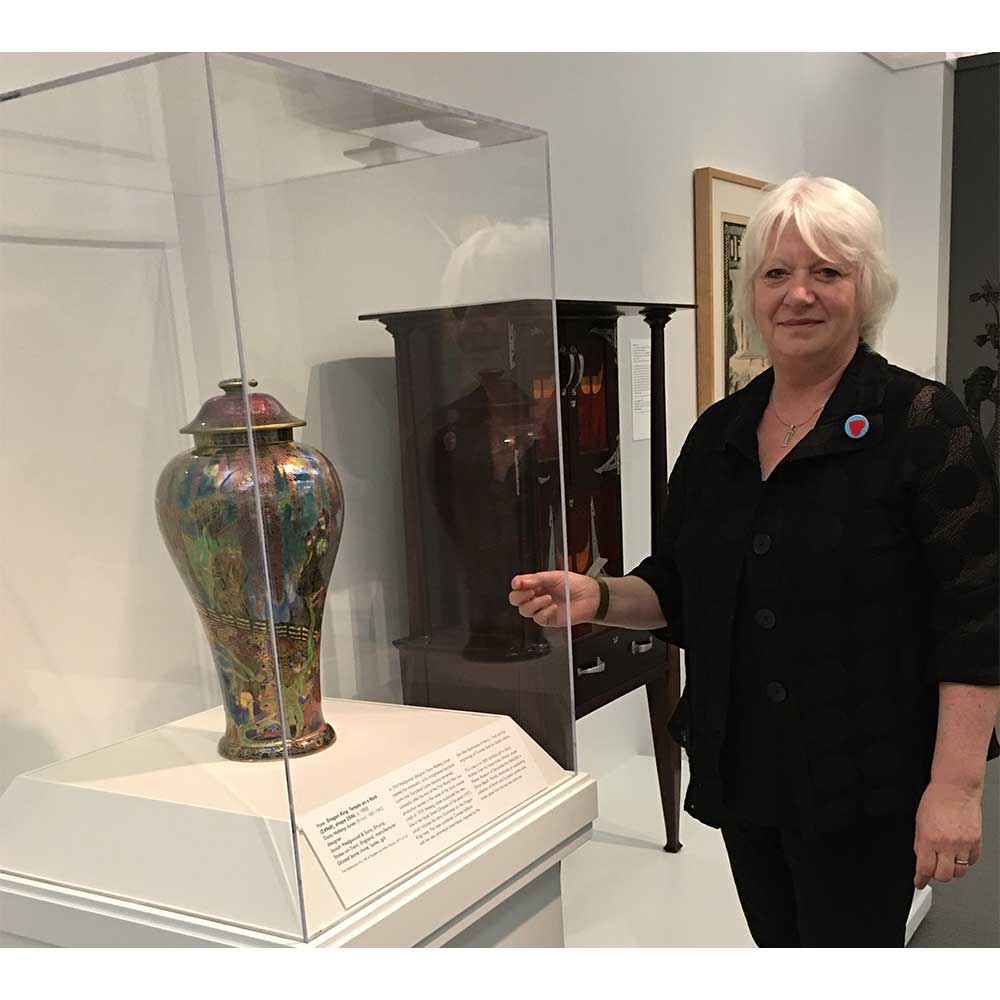
Wedgwood Fairyland Lustre Dragon King Temple on a Rock @ the Wolfsonian
